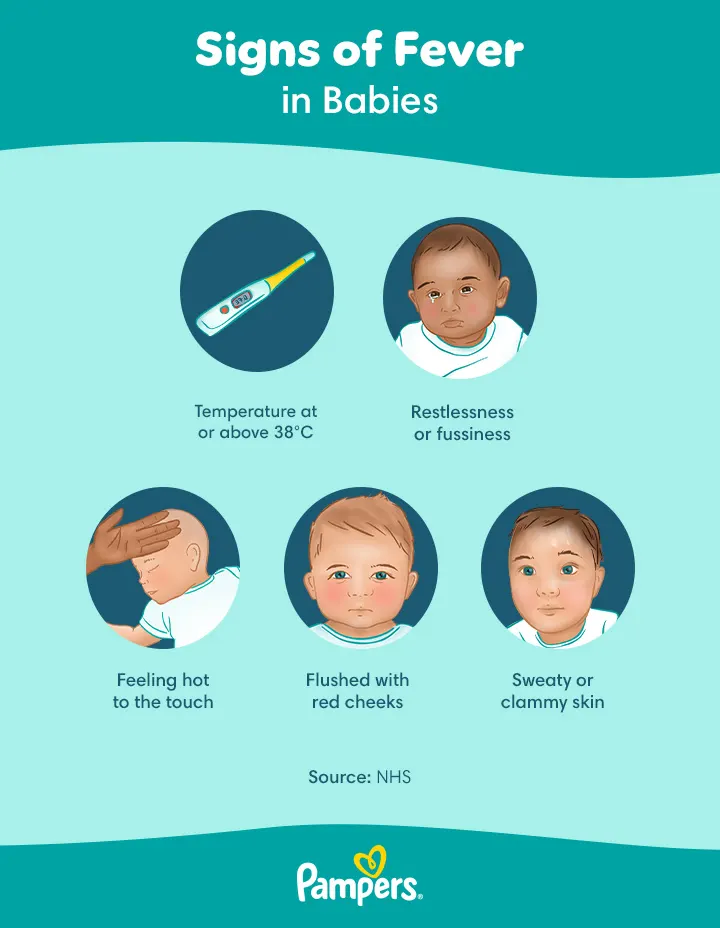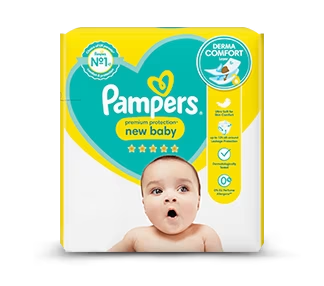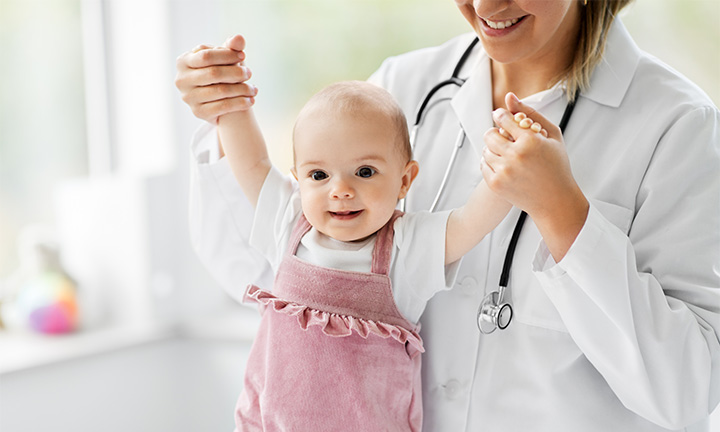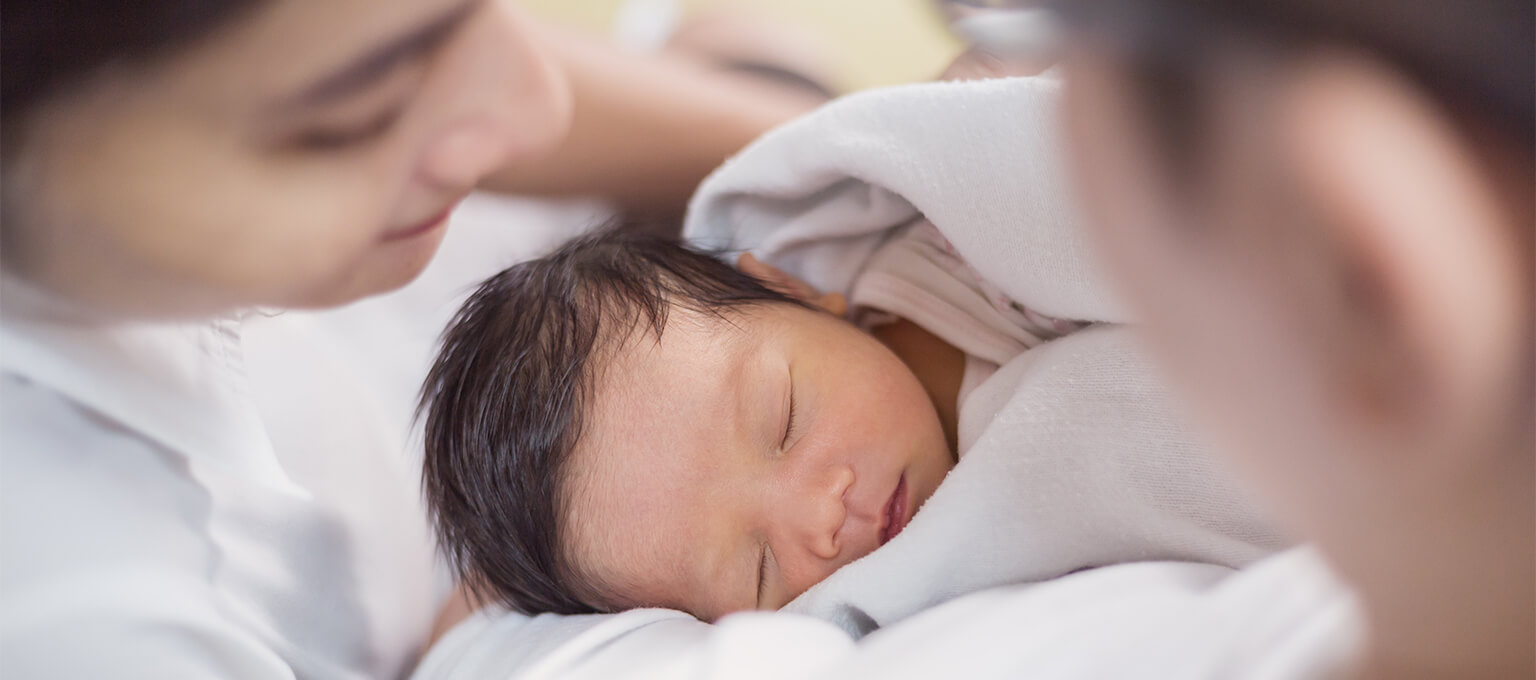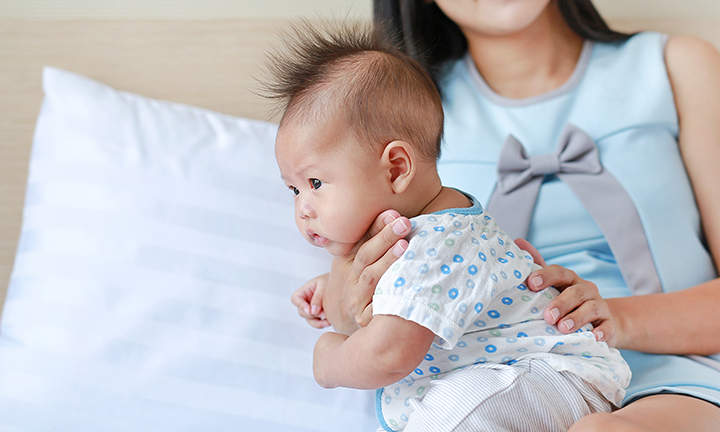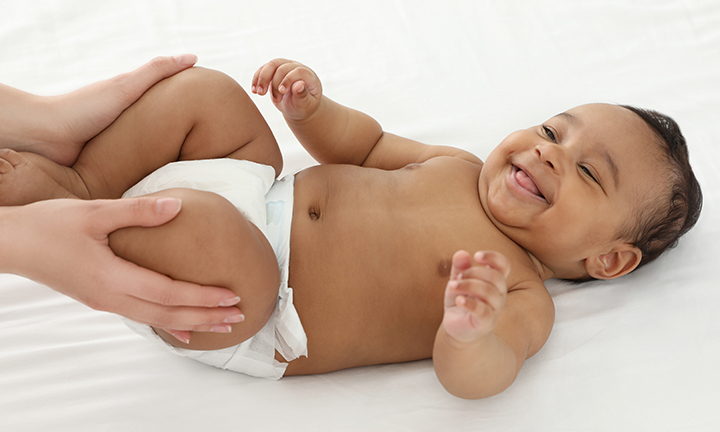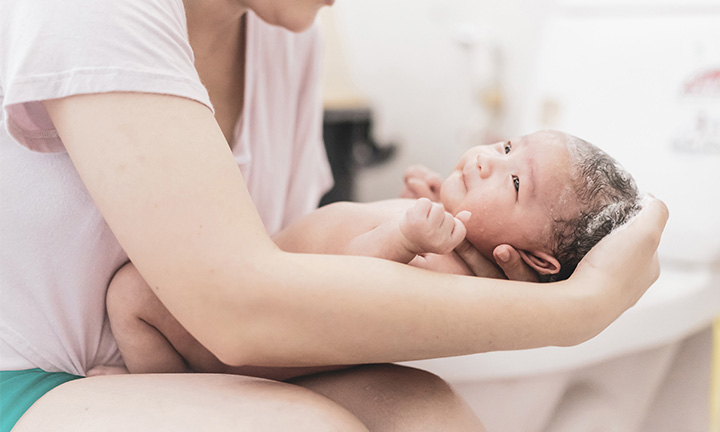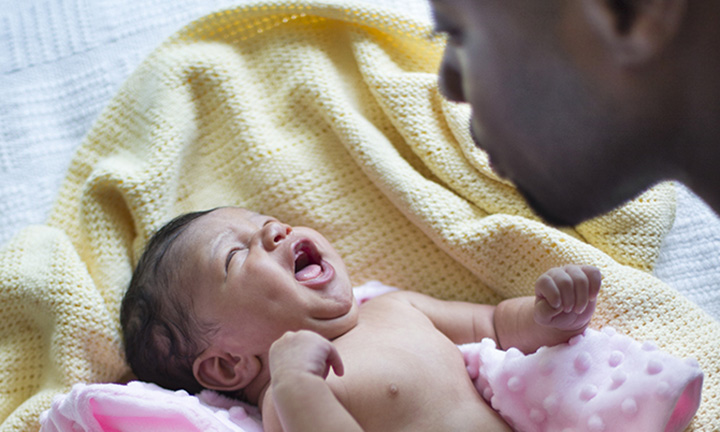
Fever in Babies and Newborns
Fever in newborns, babies and children of all ages is actually quite common. But as a parent, you might wonder when to worry about a fever in babies or what it could indicate. And, of course, you’re likely looking for ways to comfort and support your little one. Keep reading to learn about high temperatures in babies and newborns, what’s a ‘normal’ temperature, what to do when your baby has a fever and more.
What Is a Fever?
A fever is when someone has a high temperature, which is the body’s natural response when fighting an infection, such as a cold. It’s part of the parenting journey when it comes to common childhood illnesses, is typically nothing to worry about and usually goes away within three to four days or sooner.
What Is a Normal Baby and Newborn Temperature?
A ‘normal’ temperature will vary from person to person, newborn to newborn and baby to baby. However, experts consider a temperature between 35.5 and 37.5 degrees Celsius to be normal. For a newborn or baby, a temperature at or over 38 degrees Celsius is considered high, and a fever.
Baby and Newborn Temperature Chart
For a visual way to remember the range of a normal temperature and a fever for babies and newborns, have a look at the chart below. Just remember that a normal temperature range for babies and newborns can vary from child to child.
So, if your newborn has a fever, that’s because they have a temperature at or over 38 degrees Celsius. The same is true for babies and older children with a high temperature.
Signs of a Fever in Babies and Newborns
The main sign or symptom of a fever in babies and newborns is a high temperature. However, there are some physical symptoms that you might notice as well:
Additionally, your baby might also appear a bit fussy or distressed. All of these symptoms are normal in babies or newborns with a fever. But it’s important to monitor your child, as symptoms worsening could warrant a call to your doctor or a trip to the hospital. Keep reading for more advice on when to call your doctor when your baby has a fever.
What Causes Fever in Babies and Newborns?
If your baby or newborn has a fever over 38 degrees Celsius, it likely means their body is likely fighting an infection. It’s a natural, normal response in older children and adults, too. To better understand what infection might be causing your baby’s fever, consider other symptoms:
Other Conditions Related to Fever in Babies and Newborns
In addition to an infection, it’s fairly common for babies, newborns, older children and adults alike to develop a fever after receiving vaccinations. Luckily, a fever caused by a routine vaccination usually doesn’t last as long, going away in a matter of hours or up to 48 hours.
How to Take Your Baby’s Temperature
How to tell if your baby or newborn has a fever is relatively easy; you just need to take their temperature. Here’s a rough guide on how to take the temperature of a newborn and baby:
But getting a wriggly baby to stay still can be a challenge, so here are a few more tips on how to take your baby’s temperature:
Keep a thermometer in your baby’s first aid kit and watch the video below to learn what else to have on hand.
What to Do if Your Baby Has a Fever
What to do when your baby or newborn has a fever over 38 degrees Celsius depends a bit on their age. The younger your child is, the more worrisome a fever is. So, call 111 or your GP surgery if
A high temperature in newborns and younger babies can cause serious complications, so it’s important that you seek medical attention in the two cases above. For babies 6 months or older, a fever will most likely go away on its own after a few days without any complications. Still, it’s best to keep an eye on your child and monitor their condition.
Here’s a summary of what to do and what not to do if your baby or newborn has a fever:
As a parent, you want to make sure your baby feels comfortable and soothed when they have a fever, so you might wonder how to dress a baby with a fever at night or whether you should strip them of clothing when they have a temperature. As mentioned above in the ‘What NOT to do’ section, overdressing, underdressing and/or bathing a baby with a fever isn’t necessary. Warming your baby up or cooling them down might impact the fever’s ability to fight the infection and could cause your little one to feel cold and shiver.
Medicine to Reduce Your Baby’s Fever
Medicine like paracetamol or ibuprofen can help bring a baby’s fever down if they’re feeling uncomfortable. However, when giving your child medicine, it’s important to always consult with your GP. A few important reminders from above include:
If your baby has a fever but isn’t showing signs of feeling unwell, then you can let the fever run its course, as it’s fighting an infection. But if your little one is uncomfortable, talk to your GP and listen to their instructions on if and when to administer medication, plus how much and for how long.
When to Call Your Doctor
Call your GP if you have any questions or concerns regarding your baby’s fever. Also, consult them if you want to offer your child any fever-reducing medication, such as paracetamol or ibuprofen.
You’ll also want to call your doctor and/or 111 if your baby shows symptoms that indicate a serious condition, such as if your child
Call 999 and head to the nearest hospital emergency department if your baby
Febrile Convulsions
Though rare, a child could experience a febrile convulsion or fit (also known as a febrile seizure) with a high temperature. Seeing your child experience a seizure can be very scary, but know that it’s not typically serious. However, it’s always important to get medical help whenever your child has a seizure of any kind.
Febrile seizures/convulsions/fits usually affect children between 6 months and 6 years, last two to three minutes and may accompany the following symptoms:
If your child experiences a febrile seizure, time the fit and ensure they’re safe without moving them. When finished, comfort your child and call your GP.
Only call 999 or take them to A&E if it’s their very first seizure, the fit lasted more than five minutes or they have another seizure within 24 hours. You’ll also want to treat the seizure as an emergency if your child is having a difficult time breathing or appears more drowsy than usual for more than an hour after the fit finished or if, while experiencing the seizure, only one side of their baby was stiff and twitching.
FAQS AT A GLANCE
A normal temperature range is typically between 35.5 and 37.5 degrees Celsius, though this can vary from child to child. Any temperature at or over 38 degrees Celsius is considered a fever in babies and newborns.
The Bottom Line
When your baby or newborn has a fever, it’s normal to be worried or concerned about a high temperature. But find some solace in knowing that fevers are the body’s natural response to fighting an infection and usually go away on their own after a few days. Of course, call your GP with any questions or concerns (and before giving your little one any medication). You’ll also want to be extra cautious with fever in newborns under 3 months old and babies from 3 to 6 months old (call 111 and your GP’s surgery).
Remember that babies tend to get sick, and fever can be a common experience for children. Keep an eye on your little one, help them feel comfortable, embrace any extra snuggles and consult your doctor if symptoms worsen. Before you know it, your baby will be back up and wriggling around!
Don’t forget to earn a little extra cash for all your Pampers nappies and wipes purchases by downloading the Pampers Club app.
How We Wrote This Article The information in this article is based on expert advice found in trusted medical and government sources, such as the National Health Service (NHS). You can find a full list of sources used for this article below. The content on this page should not replace professional medical advice. Always consult medical professionals for full diagnosis and treatment.
- National Health Services (NHS). “Baby and Toddler Safety.”
- National Health Services (NHS). “Febrile Seizures.”
- National Health Services (NHS). “How to Take Your Baby’s Temperature.”
- National Health Services (NHS). “High Temperature (Fever) in Children.”
- NHS Gloucestershire Hospitals. “Fever Advice for Children and Young People.”
- NHS Kingston Hospital. “Fever (High Temperature) in Children.”
- NHS Royal College of Paediatrics and Children. “Fever/High Temperature.”
Read more about Newborn Baby
Related Articles
Join Pampers Club and get:

